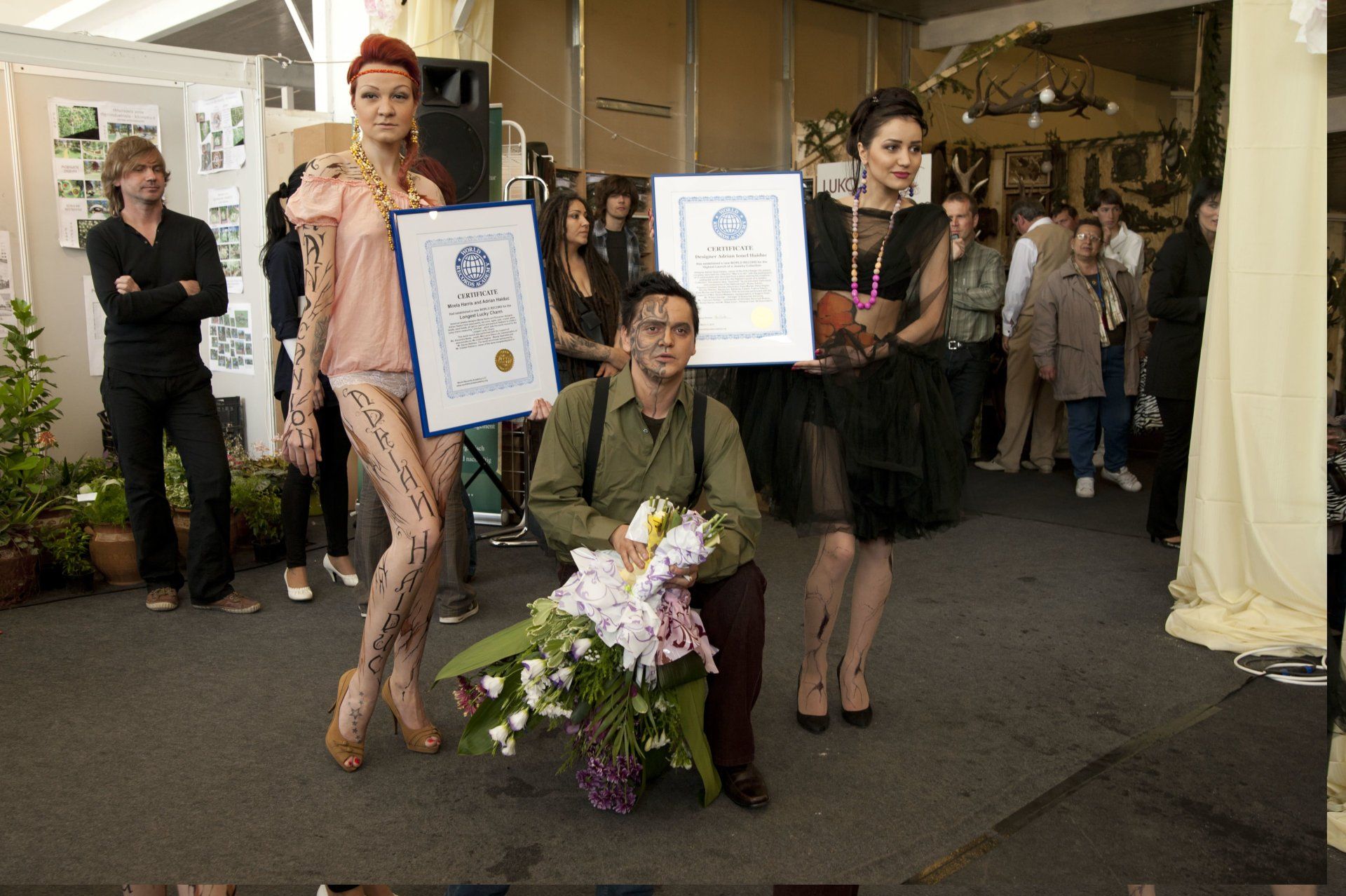World's Largest Lighthouse Lens, world record in Oʻahu, Hawaii
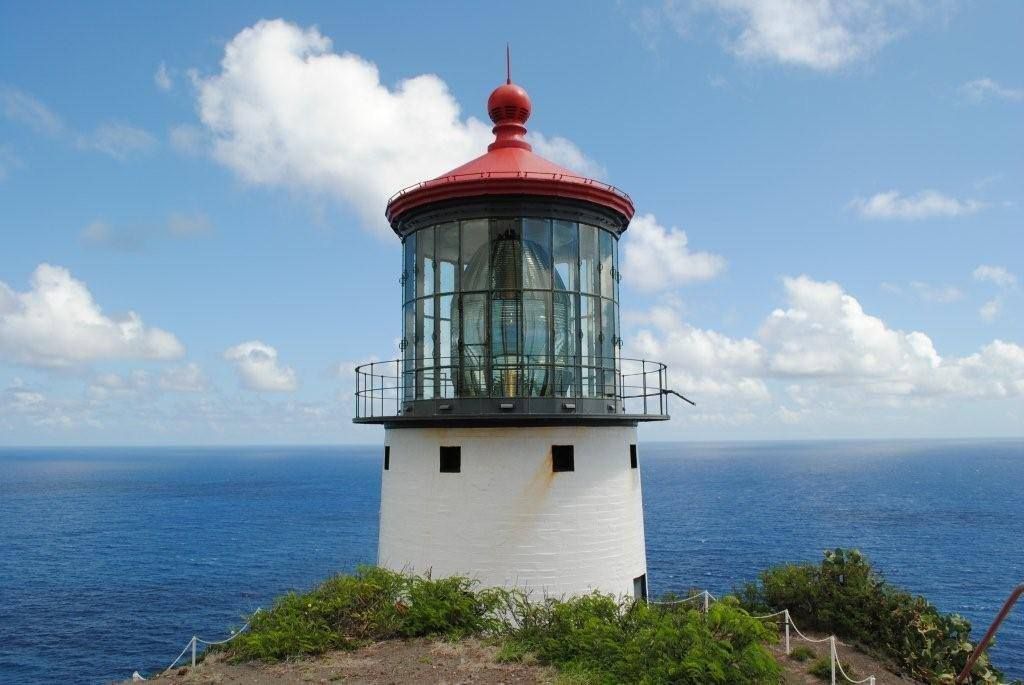
Oʻahu, Hawaii, United States--The Makapu’u Light on Oahu’s southeastern most point can be seen from 19 nautical miles away and houses a 12-foot-tall and 8-foot-wide Hyper-radiant Fresnel lens, which sets the world record for being the World's Largest Lighthouse Lens, according to the WORLD RECORD ACADEMY.
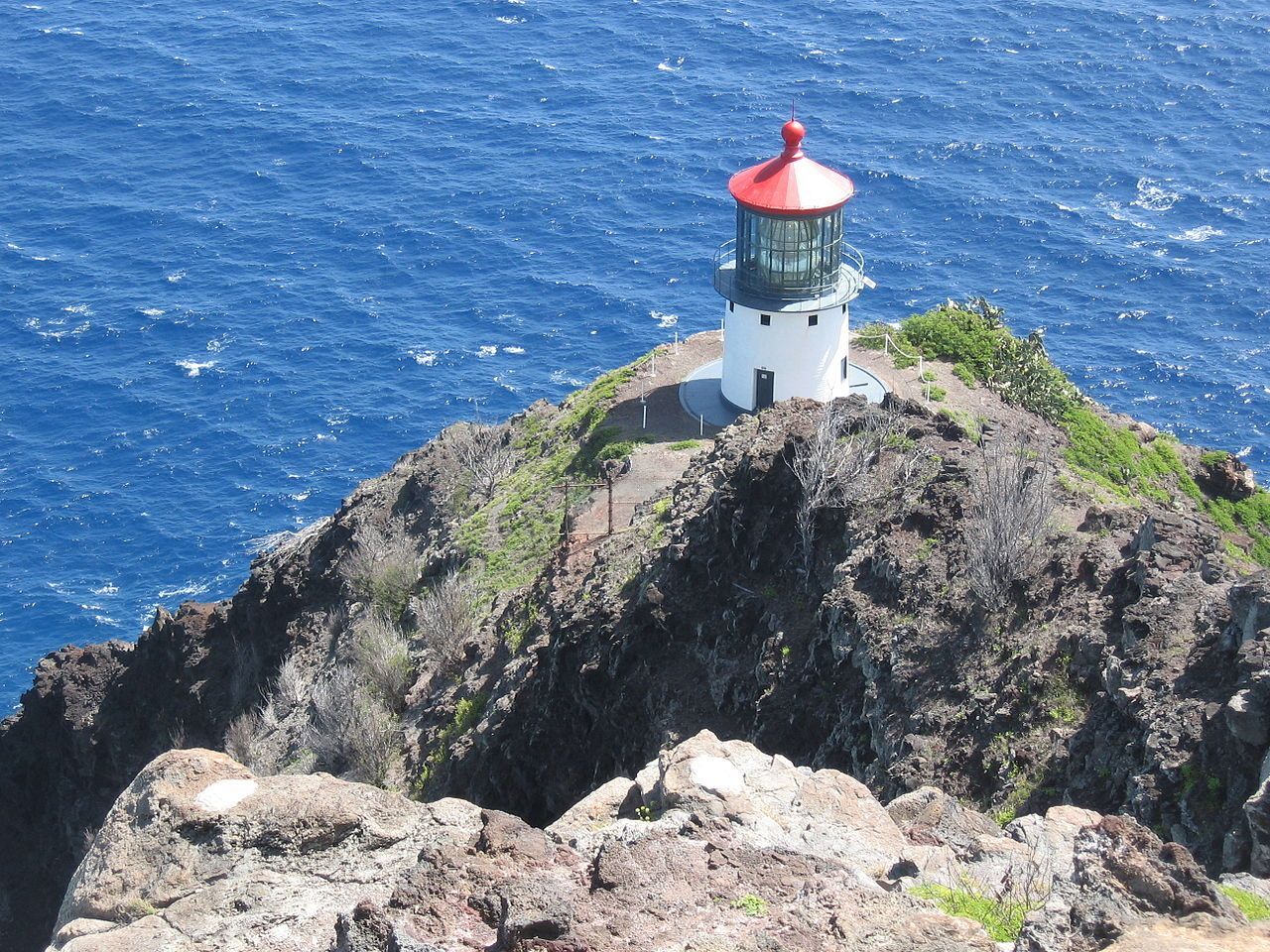
"The Makapuʻu Point Light on the island of Oʻahu has the largest lens of any lighthouse in the United States. It was listed on the National Register of Historic Places in 1977.
"...Also displayed at the fair was a hyperradiant Fresnel lens – the largest size ever made, "off the chart" of sixth through first Order. This lens was on hand when it was decided to build and outfit the Makapuʻu Point Light. Rather than order a new lens, the huge optic construction – twelve feet tall and with over a thousand prisms – would be used at the new Makapuʻu Point Light.Makapuʻu Point Light thereby became the only U.S. light with such a lens, and ever since its activation in 1909, it has had the distinction of having the largest lens in U.S. service.
"The light remains in control of the Coast Guard, surrounded by state-owned land; the trail leads to the light, and it is a popular destination for hikers. The light is marked as white with red lantern. However, it used to be marked with a black lantern, and some sources erroneously indicate that as the present markings." (Wikipedia)
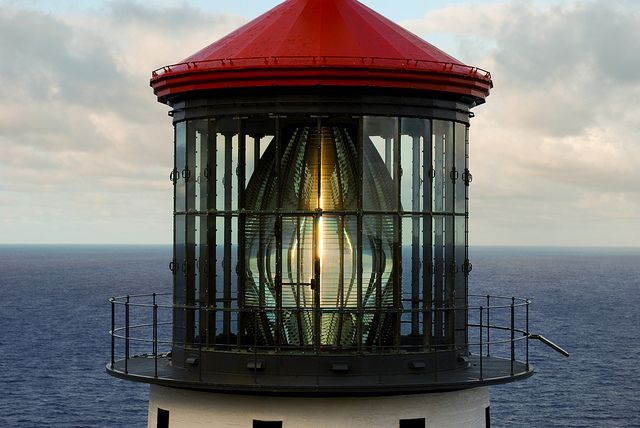
"Did you know that Hawaii is home to the world’s largest lighthouse lens?" the
US Coast Guard says.
"The Makapu’u Light on Oahu’s southeastern most point can be seen from 19 nautical miles away and houses a 12-foot-tall and 8-foot-wide Hyper-radiant Fresnel lens."
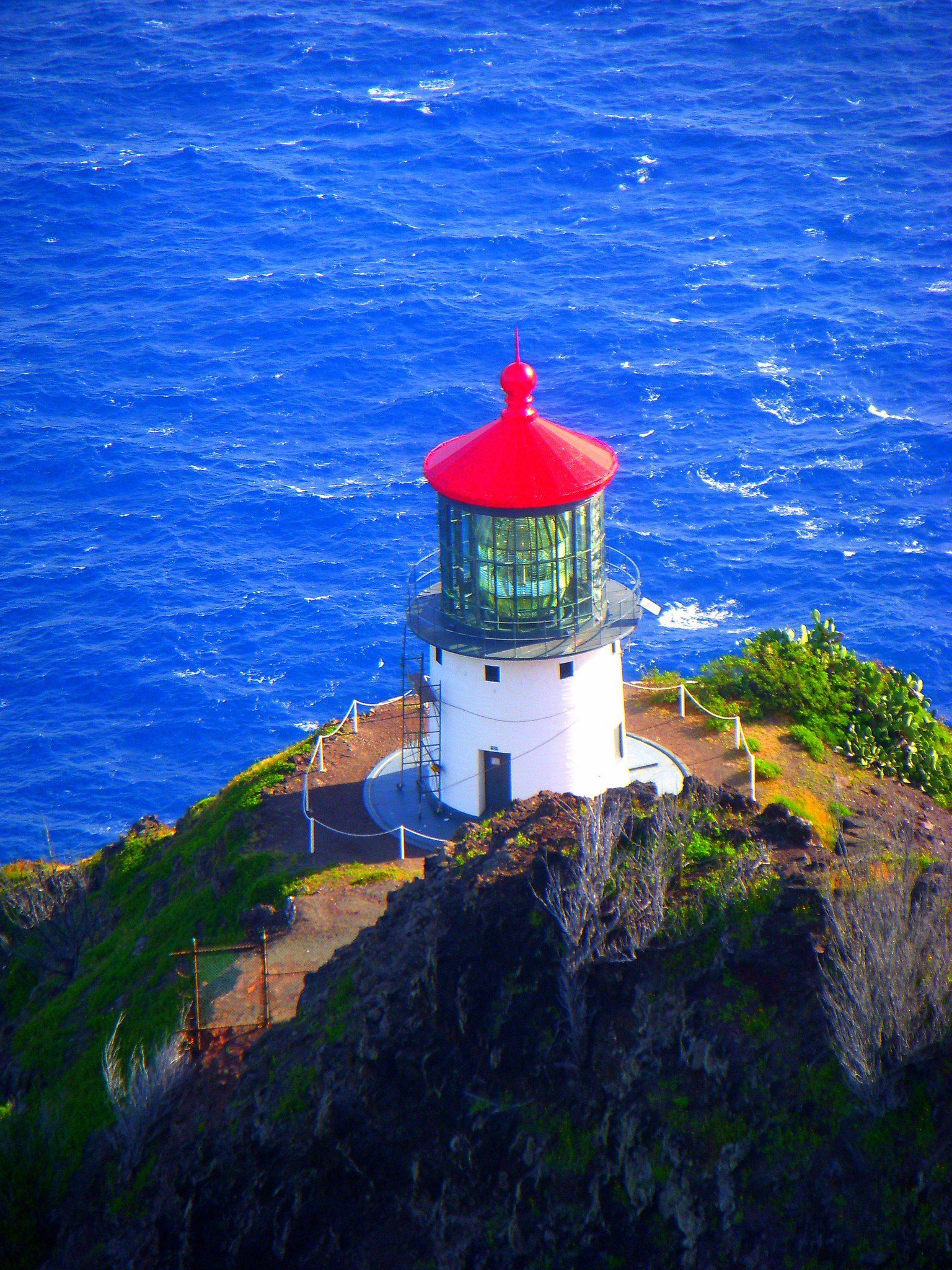
"Today, the world’s largest lens is located in a lighthouse on Oahu, Hawaii," the Cimquest says.
"The Fresnel lens at Makapu’u Point, 12 feet tall, 8 feet wide, and painstakingly crafted out of glass, has held the title since 1893."
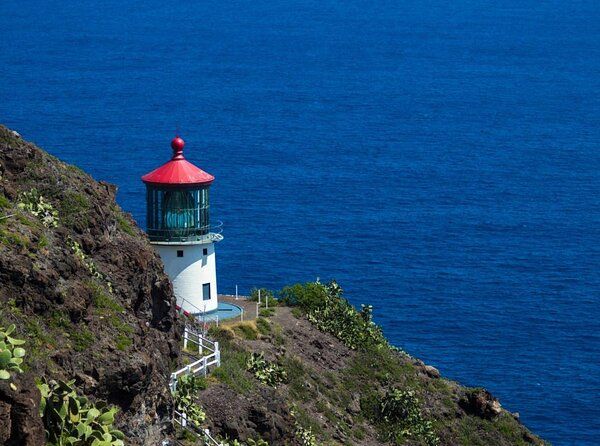
"From the Makapu’u Light on Oahu’s southeastern most point, the world’s largest lighthouse lens reflects a beam that can be seen from 19 nautical miles away. The 12-foot-tall and 8-foot-wide Hyper-radiant Fresnel lens takes up more than a quarter of the space inside the 46-foot-tall lighthouse," the DVDIS says.
"With more than a thousand prisms, the lens is almost five feet taller than the First Order Fresnel lens in America’s tallest lighthouse, the 207-foot-tall Cape Hatteras Light in the North Carolina Outer Banks. It is wide enough for several people to stand inside.
"The Hyper-radiant lens was unveiled at the 1893 Chicago World Fair. Once it reached Hawaii, pieces of the giant lens were hoisted from a moving ship up the steep lava slope and reassembled in the lighthouse. Lit in 1909, the Makapu’u Lighthouse shines across the Kaiwi Channel between the islands of Oahu and Molokai.
"The State of Hawaii maintains a trail that climbs more than 500 feet to a whale watching site above the lighthouse. From the summit, the islands of Lanai and Molokai are visible on a clear day.The accessible trail is pet friendly and bikes are allowed. An estimated 350,000 visitors hiked the Makapu’u trail in 2015 and the lighthouse has served as a location for many of the television shows filmed in Hawaii, including Baywatch, Hawaii Five-O and Magnum P.I."
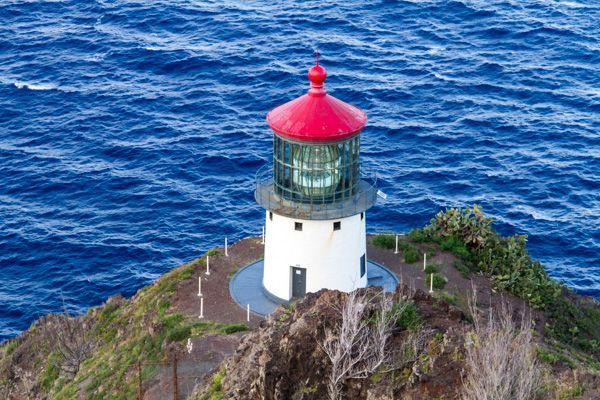
"From the Makapu’u Light on Oahu’s southeastern most point, the world’s largest lighthouse lens reflects a beam that can be seen from 19 nautical miles away. The 12-foot-tall and 8-foot-wide Hyper-radiant Fresnel lens takes up more than a quarter of the space inside the 46-foot-tall lighthouse," the
laststandonzombieisland.com says.
"With more than a thousand prisms, the lens is almost five feet taller than the First Order Fresnel lens in America’s tallest lighthouse, the 207-foot-tall Cape Hatteras Light in the North Carolina Outer Banks. It is wide enough for several people to stand inside.
"The Hyper-radiant lens was unveiled at the 1893 Chicago World Fair. Once it reached Hawaii, pieces of the giant lens were hoisted from a moving ship up the steep lava slope and reassembled in the lighthouse. Lit in 1909, the Makapu’u Lighthouse shines across the Kaiwi Channel between the islands of Oahu and Molokai."
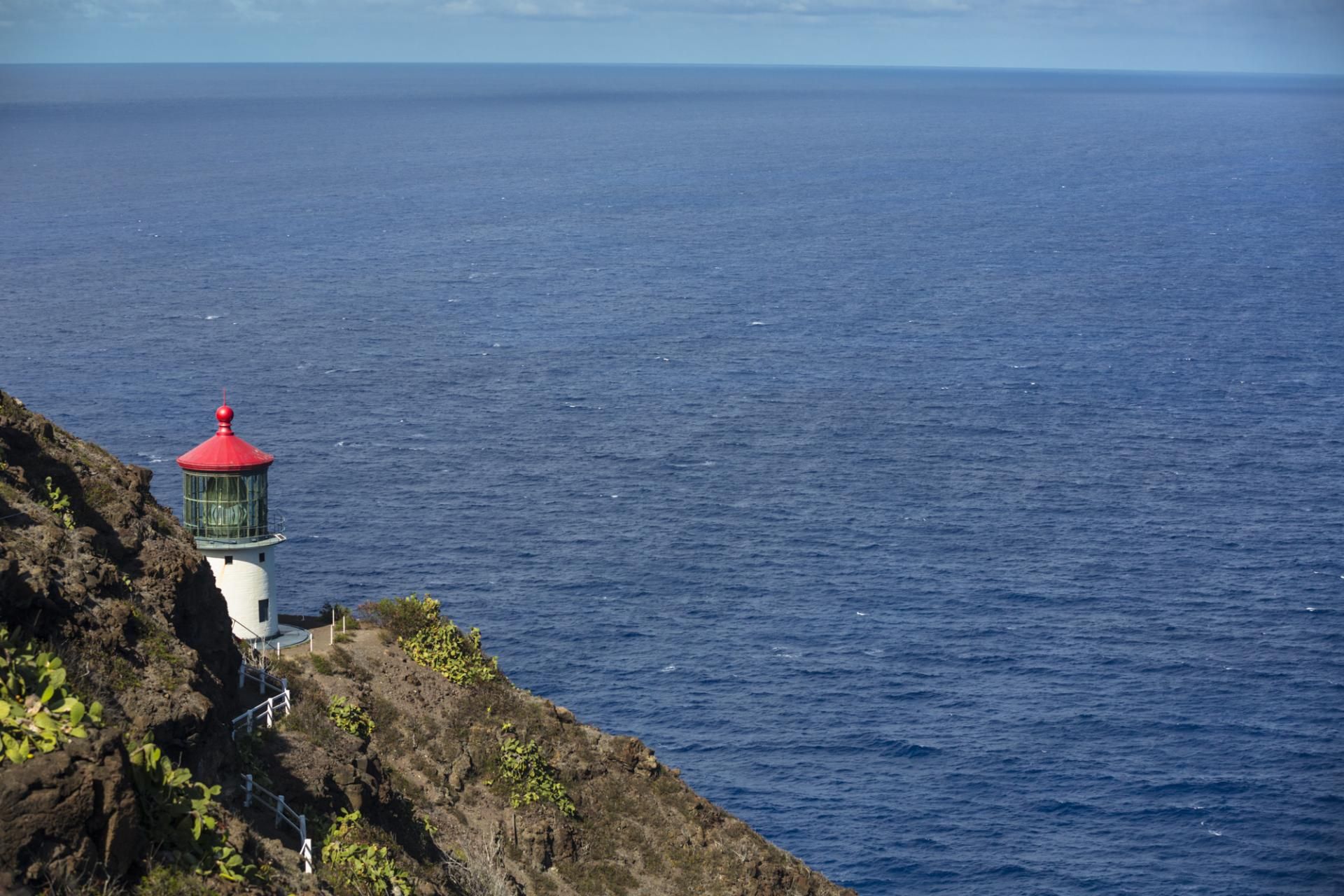
"The World’s Largest Clamshell Lens is right here on Kaua’i — at Kilauea Lighthouse! the Kauai Tv says.
"What is a Clamshell Lens? Well, instead of being round as most lenses are, the Clamshell lenses have a flattened shape, hence the clamshell name.
"Back when #KilaueaLighthouse was in operation, the light beam could shine a full 90 miles out to sea."
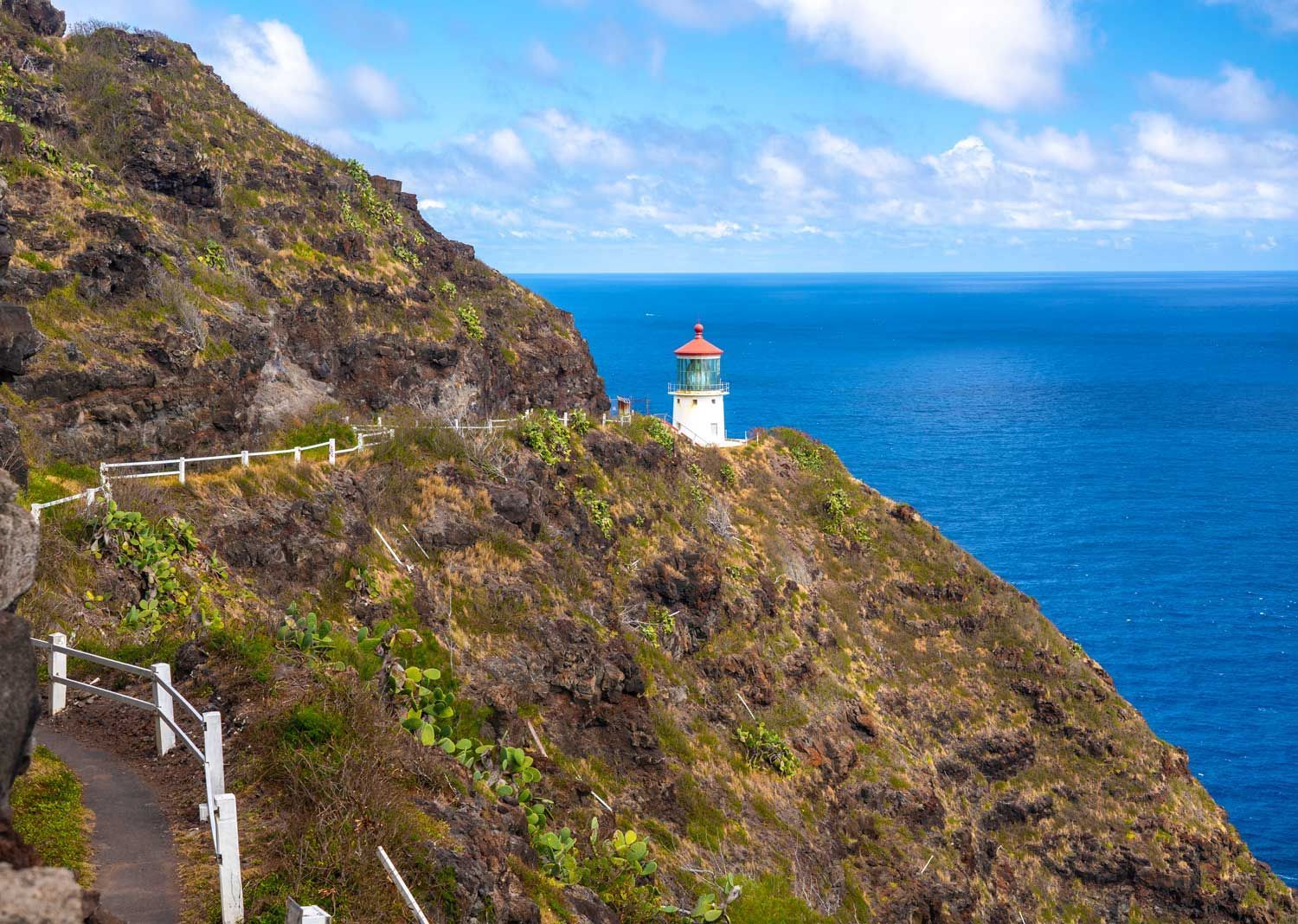
"In the early nineteenth century, lighthouses in the United States were considered inferior to those in France and England. American mariners complained about the quality of the light emanating from local lighthouse towers, arguing that European lighthouses were more effective at shining bright beams of light over long distances. While American lighthouses relied on lamps and mirrors to direct mariners, European lighthouses were equipped with compact lenses that could shine for miles," the
National Museum of American History says.
"In 1822, French scientist Augustin-Jean Fresnel was studying optics and light waves. He discovered that by arranging a series of lenses and prisms into the shape of a beehive, the strength of lighthouse beams could be improved. His lens—known as the Fresnel lens—diffused light into beams that could be visible for miles. Fresnel designed his lenses in several different sizes, or orders. The first order lens, meant for use in coastal lighthouses, was the largest and the strongest lens. The sixth order lens was the smallest, designed for use in small harbors and ports.
"By the 1860s, all of the lighthouses in the United States were fitted with Fresnel lenses. This lens came from a lighthouse on Bolivar Point, near Galveston, Texas. Galveston was the largest and busiest port in nineteenth-century Texas. Having a lighthouse here was imperative – the mouth of the bay provided entry to Houston and Texas City, as well as inland waterways. The Bolivar Point Light Station had second and third order Fresnel lenses over the years; this third order lens was installed in 1907. Its light could be seen from 17 miles away."
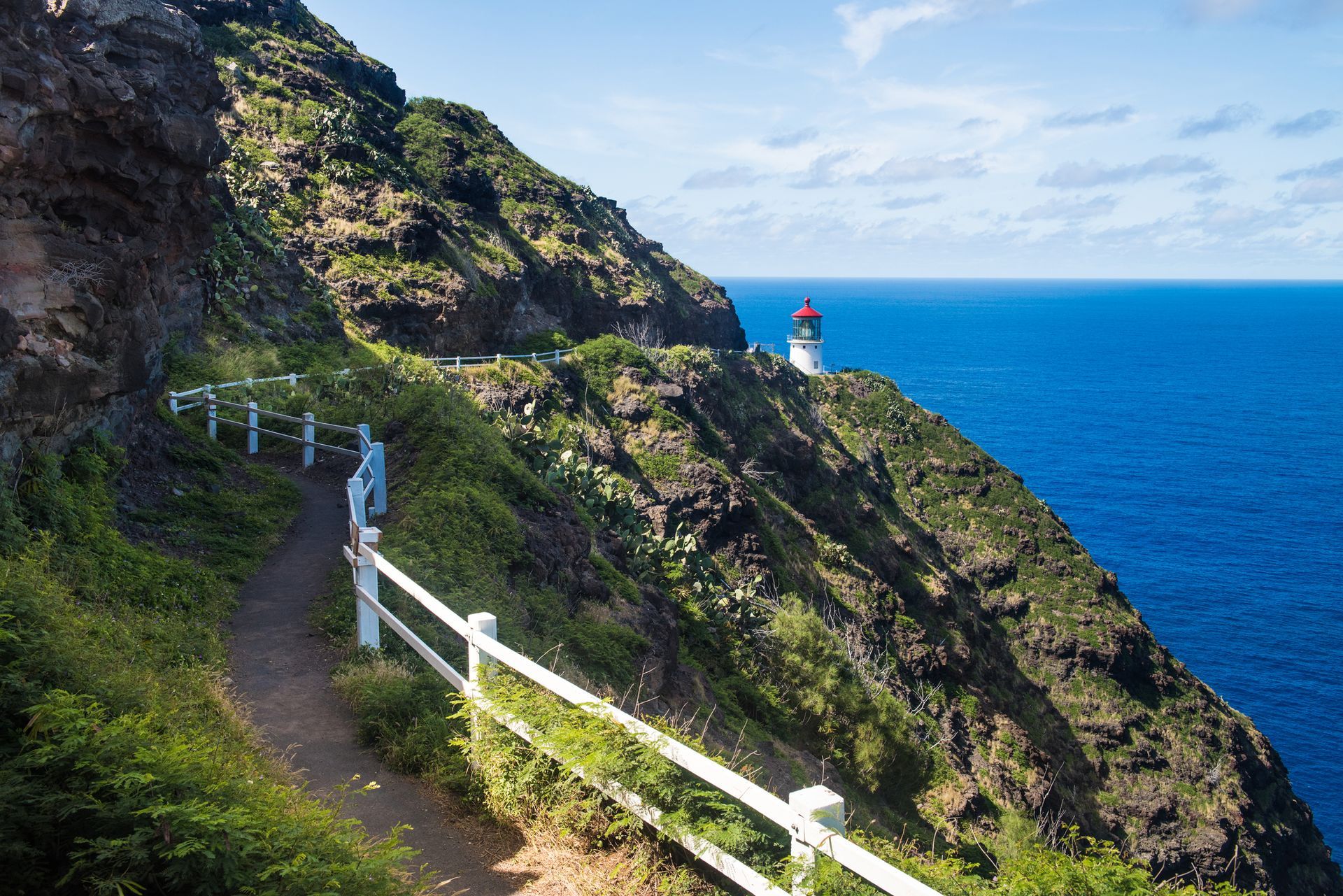
"In the late 1800s, two larger sizes were added, the largest being the hyper-radial Fresnel lens. Out of the almost twenty thousand lighthouses ever built, only 31 hyper-radial lenses were ever made. Today the whereabouts of only 22 are known, and there are only 12 left functioning in lighthouse towers to protect mariners today. Of these, the Makapu'u Point light is the largest configuration of any hyper-radial light. In 1968, it was damaged by gunfire. Two of the belt lenses were destroyed by the impact," the Keer Glass Foundry says.
"In 2008, the U.S. Coast Guard decided to restore the Makapu'u Point light and the Diamond Head light in Honolulu, Hawaii. In total, 13 lens components needed to be replaced. Keer Glass was contracted to undertake the reproduction of the glass. Lighthouse lenses are made predominantly of radial glass prisms; however, some have "belt"-shaped glass components as well. The belt lenses that we machined for the Makapu'u Point light are the largest lens components of any lighthouse ever made.
"Though the geometry is not particularly complex, the required scale and precision for the two curved Makapu'u belt-lenses presented a considerable challenge. We needed to design and produce custom molds, fixtures, and tooling throughout the multi-stepped process. The first step was to make a clay model of the lens. An investment mold was made from this, and the glass was cast. Next, custom diamond tools were created for milling. After machining, the lenses were lapped. Finally, the lenses were hand-polished."
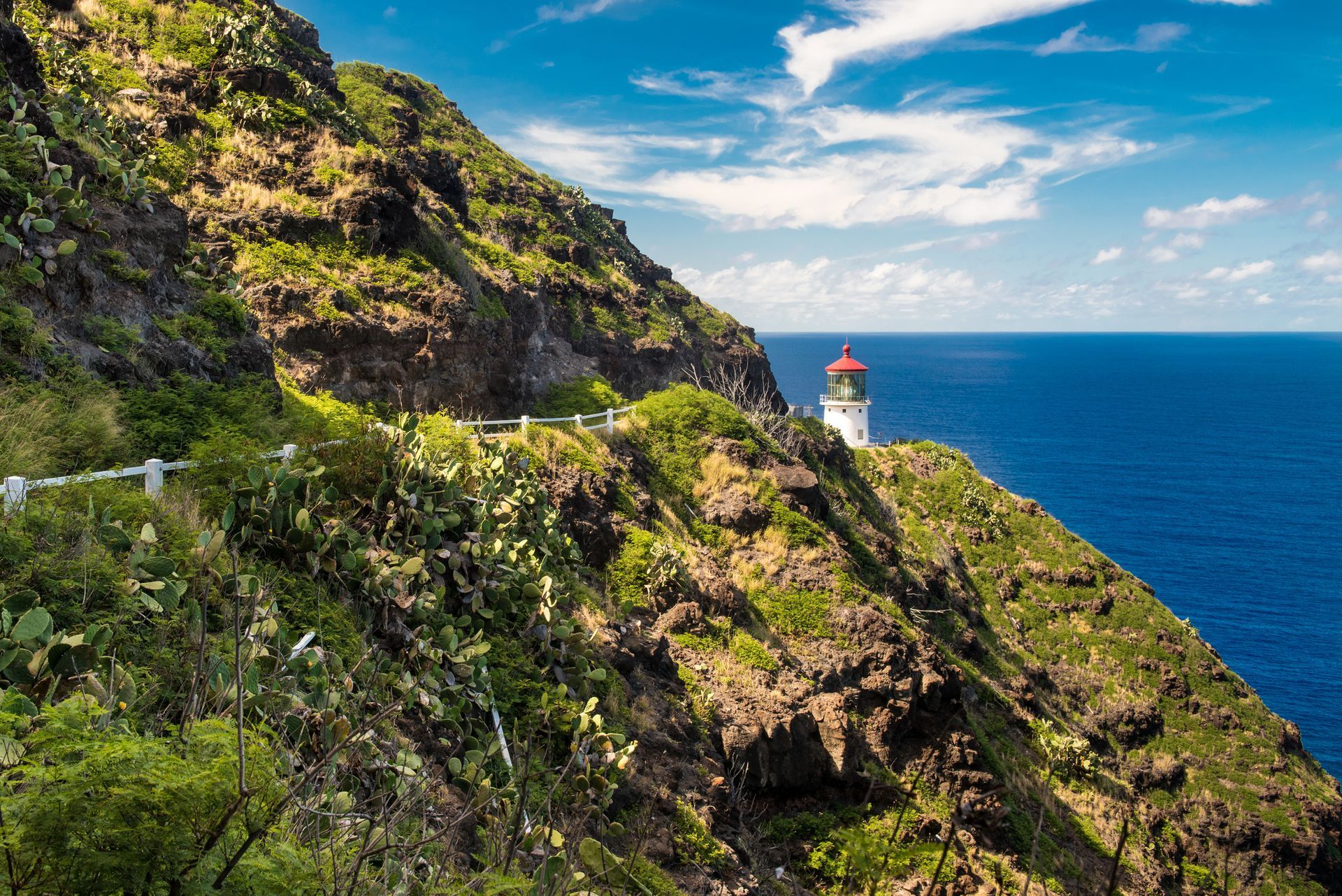
"Makapu`u Point rises 647 feet above the ocean and is composed of a number of lava flows. The station’s three keeper’s dwellings, constructed of the abundant blue lava rock on the point, were built in a depression near the summit, while a notch, large enough to hold the lighthouse, was blasted out of the lava face at a height of 395 feet above the water. A trail linking the lighthouse and dwellings and a road connecting the station to the nearest highway had to be carved into the lava point. Water for the station was pumped up from Waimanalo landing, stored in a 10,000-gallon tank, and then distributed by gravity" the Lighthouse Friends says.
"The Lighthouse Board had purchased the twelve-foot-tall lens, which had an inside diameter of roughly eight feet nine inches, in 1887. The mammoth lens, which was manufactured in Paris by Messrs. Barbier & Cie. And cost $15,280, was exhibited at the 1893 Chicago World’s Fair and the 1907 Jamestown Exhibition, before being shipped to Oahu.
"Block and tackle was used to raise the numerous lens pieces from the deck of a ship, moored near the point, up the face of Makapu`u Point. The 1,188 glass prisms and brass framework were then assembled in the lantern room. The hyperradiant lens is the largest type of lens, and the only one of its kind used in a U.S. lighthouse. Keeper James McLaughlin was transferred from Nawiliwili Lighthouse to take charge of Makapu`u Point Lighthouse, but he arrived after its first lighting on October 1, 1909 that was made by assistants George Beazley and George Mansfield."
Photos: World's Largest Lighthouse Lens, world record in Oʻahu, Hawaii
(4) Flickr/flea55
(5) Viator
(6) John Loggins/Historic Hawaii Foundation
(7) Go Hawaii
(8) Aloha Secrets
(9) Hawaii.com
(10) U.S. News Travel

